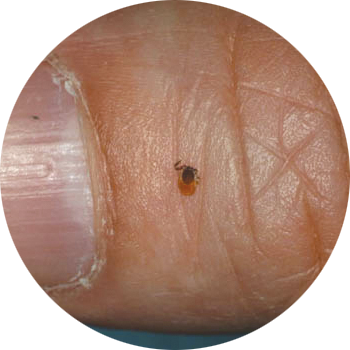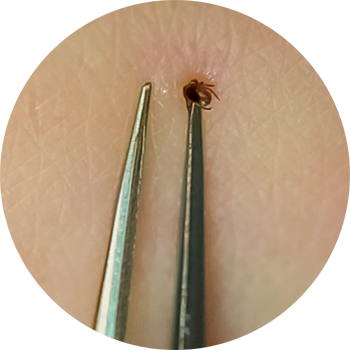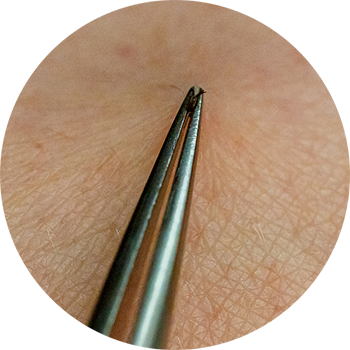Tick Bites/Prevention
- Home
- Tick ID
- Overview of Tickborne Diseases
- Lyme Disease
- Tickborne Relapsing Fever (TBRF)
- Hard Tick Relapsing Fever
- Anaplasmosis
- Ehrlichiosis
- Rocky Mountain Spotted Fever
- Rickettsia parkeri Rickettsiosis
- Tularemia
- Babesiosis
- Heartland and Bourbon Virus Diseases
- Colorado Tick Fever
- Powassan Virus Disease
- Tickborne Diseases Abroad
- Tick Bites/Prevention
- Lyme Disease Prophylaxis After Tick Bite
Tick Bite Prevention
- Know where to expect ticks. Ticks live in grassy, brushy, or wooded areas, or on animals. Spending time outside walking your dog, camping, gardening, or hunting could bring you in close contact with ticks. Many people get ticks in their own yard or neighborhood. Soft ticks that spread tickborne relapsing fever (TBRF) most often live in caves and rodent-infested rustic cabins.
- Use Environmental Protection Agency (EPA)-registered insect repellents containing DEET, picaridin, IR3535, oil of lemon eucalyptus, para-menthane-diol, or 2-undecanone. Treat clothing and gear, such as boots, pants, socks and tents with products containing 0.5% permethrin.
- Treat dogs and cats for ticks as recommended by a veterinarian.
- Check for ticks daily, especially under the arms, in and around the ears, inside the belly button, behind the knees, between the legs, around the waist, and on the hairline and scalp.
- Shower soon after being outdoors.
For more tips, see: www.cdc.gov/lyme/prev/.
Tick Removal
- Use fine-tipped tweezers to grasp the tick as close to the skin’s surface as possible. The key is to remove the tick as soon as possible. Avoid using nail polish, petroleum jelly, or heat to make the tick detach from the skin.
- Pull upward with steady, even pressure. Don’t twist or jerk the tick; this can cause the mouth-parts to break off and remain in the skin. If you are unable to remove the mouth parts easily, leave them alone and let the skin heal.
- After removing the tick, thoroughly clean the bite area and your hands with rubbing alcohol, an iodine scrub, or soap and water.
Page last reviewed: August 5, 2022


